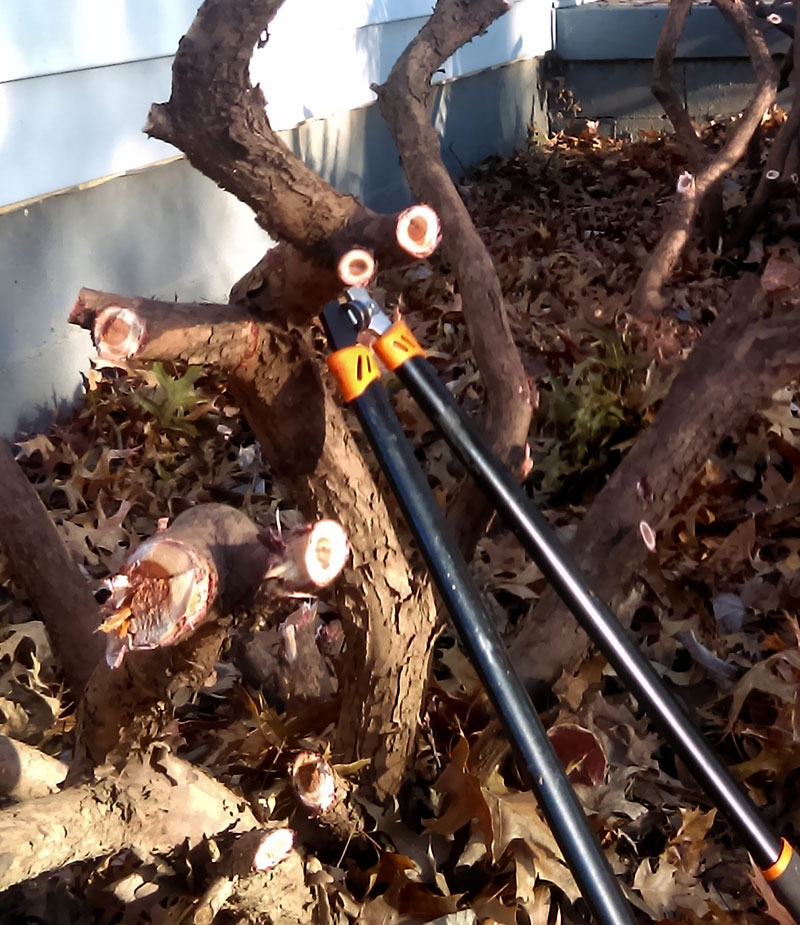
No amount of planning over the past year has removed the evergreen Taxus from in front of my house. I couldn’t stand the shrub and dreamed of a wildlife-friendly assortment of fruiting and flowering bushes and woodland wildflowers in its place.
Then my cat, Bruce, died. The Taxus had nothing to do with it, but I took out my grief on the plant. Bruce and I had spent 18 years together, inseparable best friends, traveling all across the country together, from Maine to New Mexico. Finally, he was content—maybe even relieved—to settle down in Kentucky. Some of his happiest days were sniffing around the spicebush and wild plums in our forest-like backyard.
Over the past few years, Bruce’s health declined, and my attention as his caregiver increased. Kidney, blood pressure and heart issues resulted in blindness and a hefty medication regimen, which progressed into daily subcutaneous fluids. Bruce was full of a feisty spirit in his healthiest of heydays and also during his terminal illness. His passing left a huge void that his spunky personality once filled. At the same time, my own energy and anxiety associated with tending to his needs all of a sudden had no outlet.
I paced the floor, irritated by everything and everyone, inconsolable. Then I saw it. That Taxus, leering by the window. I knew what had to be done. I grabbed loppers and cut it down, limb by limb. After I had succeeded in whacking away greenery into a grotesque sculpture of naked branches, I got a reciprocating saw and cut them down to stumps.
I’ve always been a cautious and conscientious gardener, some might say timid. But this was a different experience. It was so satisfying to take control, change my environment and clear out a toxic presence. Some guilt arose in me as I prepared to kill those plants. I set an intention to create a peaceful space for wildlife, and I decided to keep the Taxus branches as a decorative addition to another project in the backyard. I was not there to lay waste to a landscape, it was more like correcting an imbalance, transferring the life into a different form.
Once the shrubs were cleared, I was exhausted and ignored it for several weeks. It was November, and the weather was not good for gardening. I didn’t exactly have a solid plan of what I would do with the front yard anyway. All that had come of a year of daydreaming were a few plants sitting in pots awaiting a decision on their placement. I asked my partner for his leniency and patience as I rested, grieved and eventually found creative strength again.
Clearing the space had opened up room for ideas, and inspiration began to trickle in from all directions. For the first time, I could allow my imagination to fill in the yard with plants that I wanted around me. A visit to a botanical garden showed me a children’s garden full of plants named for animals. A favorite book, The Medicine Wheel Garden: Creating Sacred Space for Healing, Celebration and Tranquility by E. Barrie Kavasch, reminded me that healing gardens are among the oldest of human traditions. Soon, I knew the theme of the garden would be Bruce’s Memory Garden. Cold winter nights spent watching gardening shows reminded me of Bruce and his little quirks, and I scribbled notes as I watched.
Here are some of the plants on my list for Bruce’s memory garden: Buttonbush, because he had a habit of chewing buttons off of shirts when he was cuddling up on my lap (and swallowed at least one). Ninebark, because this resilient and adventurous cat lived at least nine lives. Roses, for the claws, the sweetness and heart-healing qualities. Pussy willow, for the kitten-paw softness. Wild plum, because Bruce was especially fond of one plum tree in the backyard where he would regularly visit and set his nose against the bark for some deep scent investigation. Bleeding hearts, for their tender beauty and a reminder of Bruce’s big but fragile heart. St. John’s Wort for the perky yellow blossoms and mood-lifting medicine, like a warm, purring friend by my side.
A few more weeks passed, the holidays came and went, and then a random day of 50-degree weather in January spurred me on with some of the same determination that cut down the Taxus. I stood in the middle of the yard and sensed the shape that the memory garden could take. Again, I set an intention to bring the right plants here that would honor Bruce’s memory, fit with the landscape, and provide beauty and wildlife habitat. I measured, sketched, double-checked specifics on my plant list, made a rough memory garden design and discussed it with my partner. When we reached an agreement, I raked up leaves to clear paths and shape rounded garden beds. Finally, I planted two dormant shrubs—the buttonbush and ninebark (pictured below)—that had been patiently waiting in containers for their roots to have a home.
As I look out my window above the newly planted beds, insulated with piled-up fallen leaves, I see new life already—squirrels investigating the changes I made, sniffing around the paths and (so far) leaving the twiggy young transplants alone. The buttonbush and ninebark might not survive, and that’s OK. It was worth a try, and it helped me feel capable of taking a risk and hoping for the best. If they do thrive, I’ll soon be surrounded by proof that the joy of life continues, without forgetting a deep and meaningful friendship that accompanied me to this point on the path.




